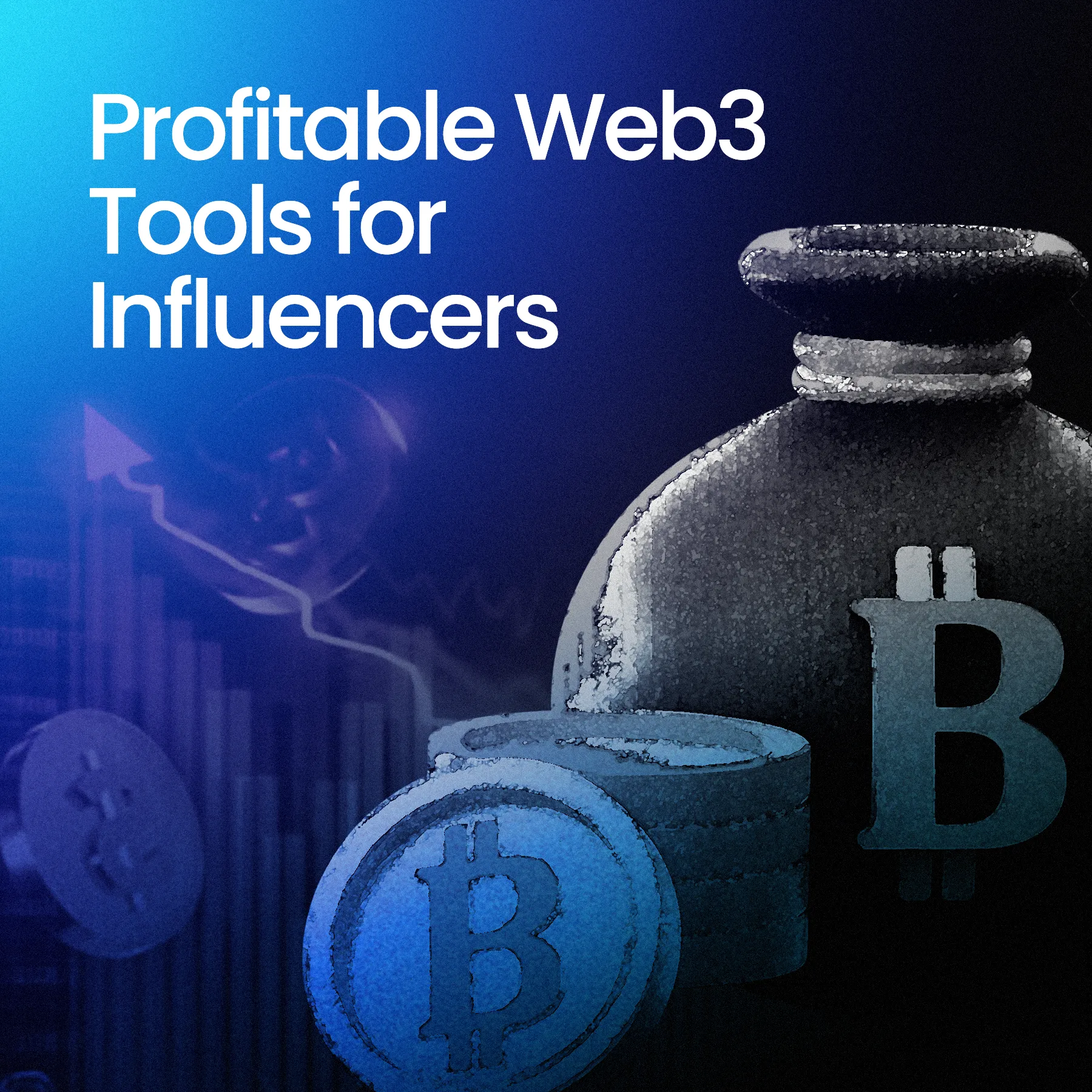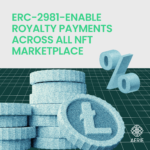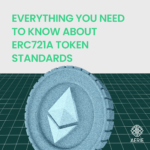How Influencers Can Leverage Web3 Tools for Profit

Web3 and blockchain technology have introduced a new suite of tools and products that enhance our experiences and offer improved features. We’ve witnessed the rise of cryptocurrencies and tokens like NFTs, which have created a new class of millionaires. The high prices these assets command reflect the value embedded within the technology — whether it’s the currency of freedom represented by Bitcoin, the programmability of blockchain offered by Ethereum, or the community and artistic value inherent in NFTs. It’s all about leveraging these tools and technologies to generate more excellent value. In this article, we’ll explore how influencers can capitalize on blockchain and Web3 to monetize their platforms.
The Cores of Influencers
Three core elements define an influencer’s success, and each can be enhanced with the help of Web3 tools. These core elements are Followers, Content, and Merchandise.
Followers
Followers are the lifeblood of an influencer’s platform. They are the supporters who directly contribute to an influencer’s earnings. The influencer’s number of followers is a direct indicator of their value. Here are some key considerations:
- Managing Relationships: How can influencers effectively manage their relationships with fans? Should there be a degree of separation, or is closer interaction preferable? Is there a need for an intermediary platform, or can direct engagement be more beneficial?
- Engagement: Keeping followers engaged is crucial for an influencer’s success. What strategies can be employed to ensure that followers remain active and interested?
- Exclusivity: What sets followers apart from non-followers? What unique benefits or experiences can be offered to loyal followers to distinguish them from casual or new followers? How can influencers reward their most dedicated supporters?
Content
Content is the driving force behind an influencer’s success. It is why followers are attracted to an influencer and the incentive that keeps them engaged. The quality of the content directly impacts the size of the influencer’s fan base. Here are some key considerations:
- Enhancing Content: How can influencers make their content more exciting and engaging? Are there new forms of media that can be explored? Can the content be more dynamic and tailored to the followers’ preferences?
- Distribution: How can influencers effectively distribute their content to reach potential followers? Is the content easily shareable across different platforms? Can content delivery be customized to cater to other fan groups?
- Monetization: How can influencers optimize the monetization of their content? Are there platform restrictions that limit sales and distribution channels? Can the selling process be simplified to provide multiple monetization options while allowing the influencer to focus on content creation?
Merchandise
Merchandise is a significant source of income for influencers, apart from content. Once an influencer has established a fan base, they can explore various revenue streams, including platform ad shares, sponsorships, advertisements, and product sales. Influencers build their brand by attracting audiences with similar interests and tastes. Here are some key considerations:
- Global Reach: How can influencers make their merchandise accessible to followers worldwide? Do the purchase mechanisms pose challenges for international users? Removing geographical limitations can open up global opportunities for influencers.
- Digital Perks and Products: How can influencers explore digital perks and products? While physical merchandise is tangible and holds value, the challenge with digital goods is ensuring their uniqueness and limited availability. How can influencers prevent unauthorized copying and distribution of digital products?
- Secondary Market Trading: Can merchandise trading be facilitated in the secondary market? Merchandise associated with an influencer’s brand can be valuable, and the secondary market for such items is growing. While merchandise purchased directly from the influencer is authenticated, how can authenticity be verified in the secondary market to prevent the sale of counterfeit items?
What are the opportunities?
Web3 tools and products offer many opportunities to address the concerns mentioned in the three core areas of influencers: Followers, Content, and Merchandise.
Followers
Influencers often depend on platforms like Instagram, Patreon, Medium, and YouTube to manage their followers. However, influencers and followers are susceptible to changes these platforms make. In the Web3 world, solutions like Lens Protocol and Pahver operate via smart contracts and code, eliminating the need for a third party. NFTs can represent the relationship between influencers and followers, with the following relationship recorded on the blockchain. Influencers can use these platforms to establish a transferable community relationship. Social media becomes an interface for all the NFTs associated with social media, such as followers, content, and those you follow. Platforms can no longer block or delete your account; you can simply switch to a different interface.
A more common use case in the current Web3 world involves token-gated access and community building. Influencers can categorize their followers into different tiers and groups, offering customized content and experiences. This can be achieved by issuing various NFT collections to corresponding follower groups. A simple implementation involves using Discord, where followers holding specific NFT tokens in their wallets can access exclusive channels. This ensures that followers with certain tiers, identified by having particular NFTs, receive differentiated experiences and engagement with the influencer. More advanced experiences can be created using a Web3 webpage or app interface.
Content
As mentioned earlier regarding token-gated access to channels, it is also possible to differentiate content levels. In current practices, setting tiers for subscribers and content heavily relies on platform features and requires complex settings. Using NFT tokens to set tier differences offers a universal standard for content access. It is easy to set up by utilizing self-running coded smart contracts, such as issuing new content in the form of NFTs and allowing followers to claim or view them with their holding tokens.
Moreover, creating content with Web3 technologies like NFTs makes content more accessible, transferable, and wholly owned by followers. Typically, followers can only view content rather than hold it, even if they pay to subscribe to the influencer. Creating content as NFTs allows followers to view or even acknowledge it, as mentioned earlier, by allowing them to claim or receive it through airdrops. Holding these assets makes their memberships much more valuable.
Lastly, NFTs also aid in content creation. Influencers can quickly identify and reach their core followers by offering them NFTs or targeting those who have purchased them. Influencers can allow token holders to vote for or even request specific content. This helps influencers create content that aligns with their followers’ preferences.
Merchandises
NFTs prove digital assets’ ownership, making them tradable, transferable, and verifiable. These advantages set NFTs apart from traditional digital items. With these capabilities, it becomes more reasonable for followers to spend real money on digital merchandise, as they can prove its value and ownership.
Imagine purchasing a rare skin for your game character, a collaboration between your favorite streamer and a video game. Instead of just using it in the game, where the skin is tied to your account and the game itself, owning it as an NFT allows you to resell it in a secondary marketplace. This option becomes valuable if you eventually lose interest in the game or decide that the skin isn’t as appealing as you initially thought. Being able to resell it to someone who values it more adds to its worth, compared to merely holding onto it indefinitely. Influencers can also benefit from secondary sales through royalty settings. For example, the Odyssey Stamps are limited in the Starbucks Odyssey NFT collections, and fans want to collect them. There is demand for it, so the floor prices remain above the mint prices.
For Influencers Who Are Starting Out
You can leverage Web3 tools to build your fan base and brand from the ground up! Utilize Web3 tools to distribute your content, employ NFTs as token gates, and sell your content in NFT form, among other strategies. By adopting these tools from the start, you’ll be ahead of the curve and won’t need to migrate to new systems in the future as you build on top of these superior tools.
Final Thoughts
You just need 1,000 core followers, who can pay you $10 monthly for your content. Web3 can remove all intermediaries, allowing you to focus more on content creation and less on operational hassles. With Web3, your followers are yours to keep, immune to being taken away or deleted by others. You can build something on your own, which will pay off over time. So, give it a try! Most of these tools are free to use. Invest some time exploring something that could become the ultimate business for you.









